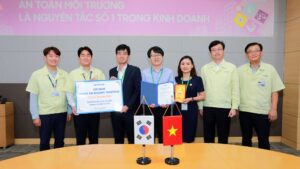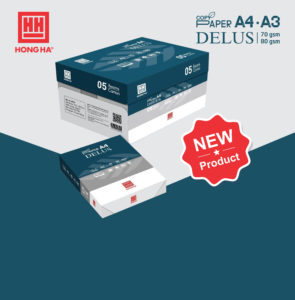
Blog
Flexibility & Visual Thinking in the Future Office
23/09/2019“Analogue writing is not obsolete” states Dennis Kopaß, Senior Marketing Manager at Legamaster. Our expert explains in this interview how the office world is changing, and why retailers need to adapt their ranges.

Where is the world of work at present?
It’s in a period of transition. For the first time, four generations are in the workplace at once – there are Baby Boomers, Generation X (born 1965–1979) and Millennials (or Generation Y), as well as Generation Z – the Digital Natives (born 1995 onwards). From 2020, over 50% of employees will belong to the two younger generations. Generation Z sees digital media as an integral part of life, and companies of all sizes face the challenge of providing them with an attractive working environment. Change is being clearly expressed in physical office space: open space is increasingly replacing traditional departments and offices for one or two people. Open offices mean working environments which foster collaboration, where teams can work together across different disciplines, outside their own department. Many businesses based in Germany are now designing their office space in line with this successful model. It’s not just big companies that are sending out forward-thinking messages: SMEs are also rethinking the layout and design of their working worlds. All companies will benefit from the future of design thinking: interior design based around fast-moving, agile processes.
What does this mean for the office 4.0?
Instead of conventional meeting rooms, several smaller, more flexible spaces will be available – including places for meetings that are visually separated off, and ‘smart’ areas which can be used spontaneously for informal meetings. Many companies already have ‘huddle rooms’ to which small teams can retire for brief, fairly relaxed meetings. These are equipped with a flipchart or a floor-to-ceiling whiteboard wall, a standing table and some stools: these are informal spaces. Think tanks already help foster creativity and bring about solutions to problems. In order to involve those areas of the company that will be affected by these outcomes, visualisations will remain key, perhaps on whiteboard walls in prominent places. In the Future Office, it will be completely normal to have a virtual desktop which allows workers to access their own personal virtual workspace from any physical desk in the company.

Generation Z wants structure, self-fulfilment and to feel comfortable; they consciously reject the open-plan office. What makes ‘open spaces’ different?
The concept has very little to do with the conventional open-plan office, in which you can see right through from one side to the other, with 5 rows of 20 desks. Instead, a relatively large area is divided into ‘islands’ for teams, in which all workspaces are oriented towards daylight. Now nobody need sit in the middle of the room under fluorescent lights. Areas for wellbeing and design thinking are also crucial, as they foster creativity. This is the ideal environment for agile project management. Open spaces also promote advanced design thinking because of the acoustics, since the new floor-to-ceiling whiteboards and pinboards also provide sound insulation. They prove that working environments can feel like home and bring a sense of belonging. This wellbeing trend is setting new standards – and after all, we often spend more time in the office than we do within our own four walls.
The German employment ministry wants to legislate for working from home. Do younger generations still find this an attractive way of working?
Not working exclusively from home. What many young people want is a mixture of office and home working, which often works well in companies which allow their workers to do so.

The range of products for the presentation and moderation sector is certainly growing, which will be welcome news for retailers.
Dennis Kopaß
How important will visualisation be for tomorrow’s world of work and what do we need for it?
Studies predict it will be very important. This is down to new methods of agile project management, which are much more fluid and therefore quicker and more efficient than conventional project management methods. Companies are increasingly investing in these, because more agile thinking means the ability to react more quickly. How does this work? Typically, with agile project management the goal won’t be fully established at the start of the project, which means the team can constantly adjust the goal to customer requirements and changing circumstances. This methodology is something which Generation Y learned at university. Visualisation is the key theme for agile project management. Whiteboard walls are everywhere, so ideas and project progress can be collated and recorded.
Is it possible that analogue visualisation will fall behind?
Digitalisation will indeed press ahead, but it will never completely replace analogue writing with a pen. Instead, digital and analogue visualisation will coexist and support one another. We are convinced that both will coexist peacefully in future.
What effects will these developments and predictions have on retail?
The range of products for the presentation and moderation sector is certainly growing. One reason for this is the huge growth in office space in Germany. Whiteboards and space to write on are in particular demand, this is more than just a passing fad. Retail can use this segment to boost its turnover.

What does Legamaster offer in terms of visual communication products and solutions?
Legamaster offers some 1,500 presentation equipment products for professional use. Our range includes whiteboards, mobile glass writing boards and flipcharts plus writing accessories, and digital solutions such as interactive touch displays. We observe the modern world of work very closely to see what is needed, and monitor the latest technologies for things we can use in visualisation – such as innovative LED technologies and gesture control. The future is so close, you can touch it: Even now you can use virtual reality headsets to take part in a meeting happening thousands of miles away. In the next generation, the divide between reality (IRL) and virtual reality and the internet will be increasingly blurred. Appropriate visualisation solutions will be required.
What new products did you present at Paperworld?
There was a lot of interest in Legamaster’s ‘Space up’ range of frameless writing surfaces which can be enlarged to suit the customer. These allow customers to cover whole walls with a whiteboard. We also presented magnetic sheets which can turn almost any surface, including doors and cupboards, into an outsized writing surface. For complex tasks and brainstorming, you often want more space than the usual writing surfaces provide. That was what a study found: It provided the final push we needed to develop the right product.
Thank you for the interview!
The brochure ‘The Future Office – Flexibility’, published for the innovation areal at Paperworld, provides further exciting facts, interrelationships and background.












